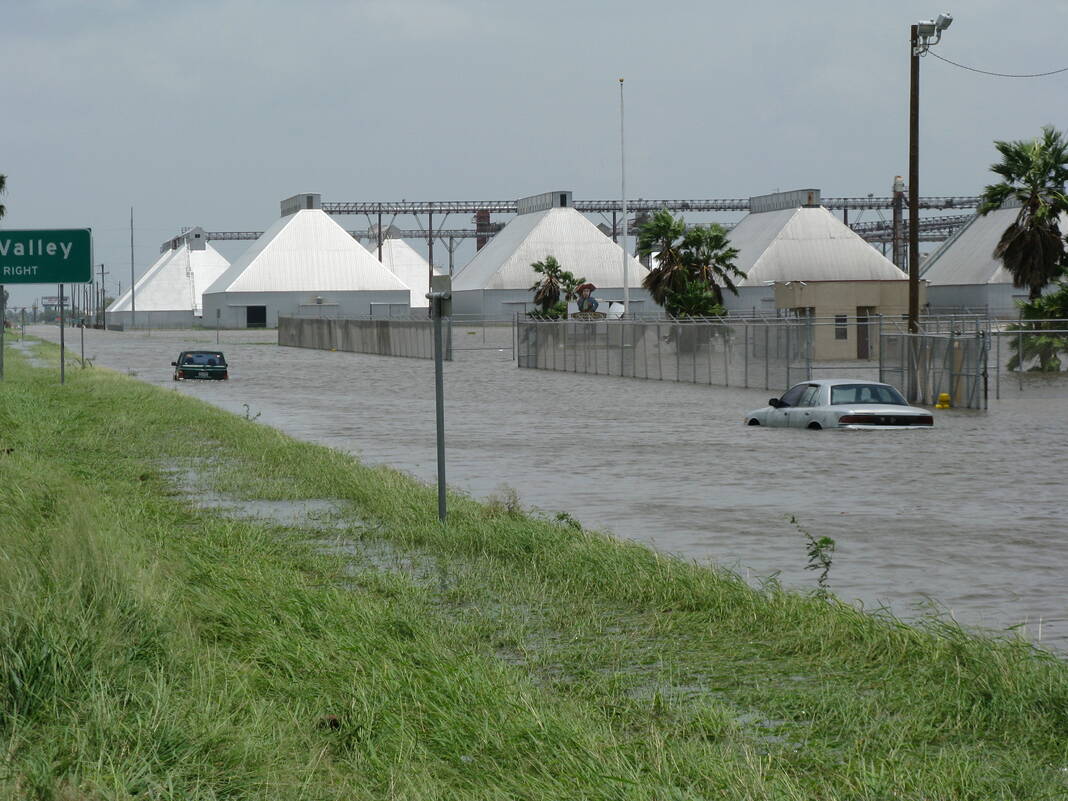
Making money flow faster after a disaster is the point of SB 289, which authorizes local governments to pre-plan for a catastrophe to the extent possible with the aim of expediting federal assistance from HUD and FEMA.
Come Dream Come Build (CDCB) is trying to get the word out about SB 289, which it and the Texas A&M Hazard Reduction and Recovery Center (HRRC) pushed through the Legislature in 2019, though no governmental entity has stepped up so far.
Nick Mitchell-Bennett, executive director of CDCB (formerly Community Development Corporation of Brownsville), said SB 289 — also known as the “RAPIDO bill” — grew out of the RAPIDO emergency housing program CDCB launched five years ago.
“We built the houses, and we did all those things,” he said. “But a big part of RAPIDO was getting some sort of overall systems change toward the way local municipalities are able to access funds from the federal government after a disaster. Part of that access process is a planning process.”
The immediate aftermath of a hurricane is a terrible time to be trying to put together a complex recovery plan for submission to federal agencies, Mitchell-Bennett said.
“What HUD and FEMA require to access any of their money, if a disaster is declared, is there needs to be a plan, a literal, written plan done by the community that says this is where we were hurt, these are the things that need to be done, this is how we need to do it, this is the proposed timeline to do it,” he said. “Imagine if you’re Cameron County and you just got hit by a Category 4 hurricane. Planning is literally impossible.”
That’s a big reason why disaster funds get held up so long, Mitchell-Bennett said.
When CDCB began the RAPIDO housing program, it soon became apparent that much of the necessary planning can be done in advance, he said.
“Procurement of materials, procurement of labor, environmental studies, transportation systems — 90 percent of that stuff, if it was done prior to the storm, then we would not be waiting years for money to flow into a community,” Mitchell-Bennett said. “It would literally be months if not weeks.”
Local governments taking advantage of the new authority under SB 289 is essentially like buying insurance, he said.
“We all buy insurance, and we hope to God we never have to use it,” Mitchell-Bennett said “We’re just kind of on a mission to let the county and city governments, especially in our area, understand that this is a possibility. We can help.”
As an incentive, HRRC will waive its standard consulting fee for the first local government that undertakes the process, said CDCB Director of Policy, Impact and Innovation Daniel Elkin.
“It is their method of incentivizing participation,” he said. “All the more reason, in our eyes, that Cameron County should make a move.”
For those that get on board later, federal American Rescue Plan Act funds, which many local governments still have, can be used to pay for the consulting, Elkin said.
John Henneberger, an expert on low-income housing issues and co-director of the Texas Low Income Housing Information Service (Texas Housing), said pre-planning isn’t overly expensive but does require a modest investment of “time and energy.”
He described HRRC’s research into minimizing the effects of natural disaster through good planning and provision of infrastructure as among the best in the nation.
Henneberger said the HRRC team has indicated they’re “raring to go, to help out.” The pre-planning process involves working with local officials versed in emergency management in their particular city or county, he said.
“They’ve got faculty members and graduate students and the results of their studies of tornadoes and hurricanes and all of that,” Henneberger said. “They’re ready to roll up their sleeves and get involved, they tell us.”
The challenge is getting disaster pre-planning on local governments’ radar screen, he said, adding that most people don’t think about things like hurricanes until there’s one staring them in the face.
Still, the cost of not doing it is huge, Henneberger said.
“If we spend a little time now to be prepared it’s going to mean a lot less suffering and a lot of saved money when inevitably we get another hurricane,” he said. “I’ve worked on hurricane recovery since Katrina (in 2005). Each one of these storms, we’re talking about billions of dollars of public funds that are directed at trying to sort out the mess. You don’t want to be under the pressure of having people homeless and mass devastation across the community while you’re trying to quickly figure out how to spend a huge amount of taxpayer money.”
CDCB has been sending letters to local governments to inform them of the new rules under SB 289 though none yet has taken advantage.
Cameron County officials, who were made aware of the new rules after being contacted by the Brownsville Herald, say they’ve taken preliminary steps to find out how it all works.
Rolando Casas, county assistant emergency management coordinator, said his office still has questions about the process and had plans to meet with CDCB officials soon to get them answered.
County Judge Eddie Trevino said the program sounds promising, especially if it means getting federal money to the county faster in the event of a disaster, “but we want to make sure that we cover all of our bases.”
“Working with A&M, it’s something new,” he said. “We think it’s going to work but we just need to make sure. … We already have a lot of pre-position contracts in place, so we’re trying to figure out how does this enhance it … and maybe even save us a few dollars. If there’s a way to get it faster, man, let us know.”



